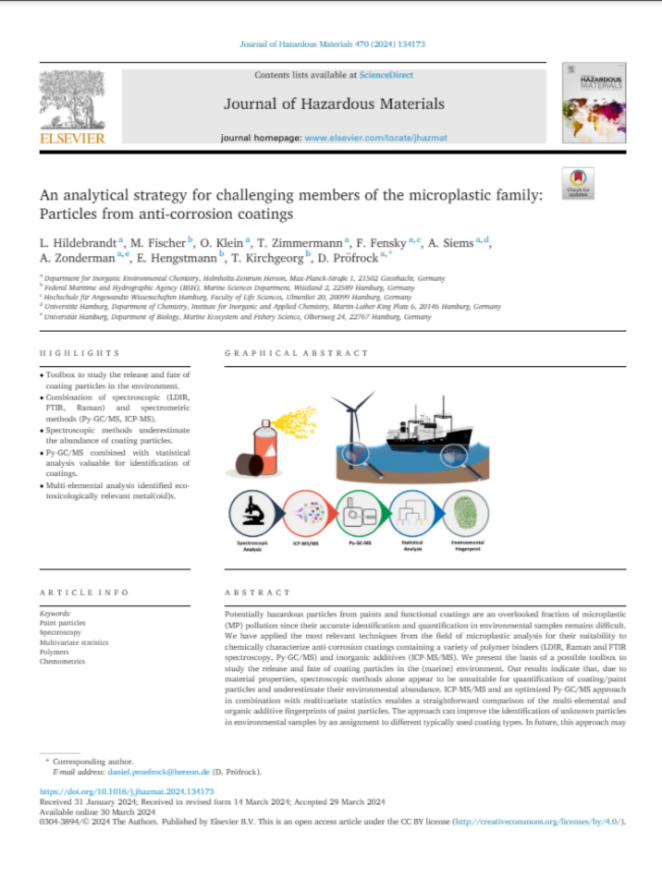General publications

Minimal chemical pollution, increased offshore wind farms and energy production sustainability
Offshore wind energy production is a relatively sustainable yet fast-growing industry, contributing to the UN development goals on green energy and climate actions. Europe’s total offshore wind power capacity as of September 2023 is 32 GW (1), only 20% of the European target to produce >150 GW by 2030.
The vast increase in offshore energy production urged different European countries to monitor the potential effects of offshore wind farms (OWFs) on the marine ecosystem, including the impact of underwater noise, the introduction of novel habitats, and the exclusion of fisheries. However, the potential risk of chemical emissions by OWF structures remains largely unknown though estimated to be small.
WP2 Publications

Potentially hazardous particles from paints and functional coatings are an overlooked fraction of microplastic (MP) pollution since their accurate identification and quantification in environmental samples remains difficult. We have applied the most relevant techniques from the field of microplastic analysis for their suitability to chemically characterize anti-corrosion coatings containing a variety of polymer binders (LDIR, Raman and FTIR spectroscopy, Py-GC/MS) and inorganic additives (ICP-MS/MS). We present the basis of a possible toolbox to study the release and fate of coating particles in the (marine) environment. Our results indicate that, due to material properties, spectroscopic methods alone appear to be unsuitable for quantification of coating/paint particles and underestimate their environmental abundance. ICP-MS/MS and an optimized Py-GC/MS approach in combination with multivariate statistics enables a straightforward comparison of the multi-elemental and organic additive fingerprints of paint particles. The approach can improve the identification of unknown particles in environmental samples by an assignment to different typically used coating types. In future, this approach may
